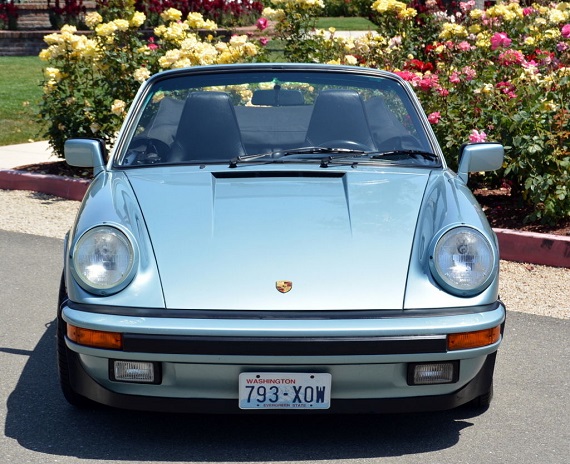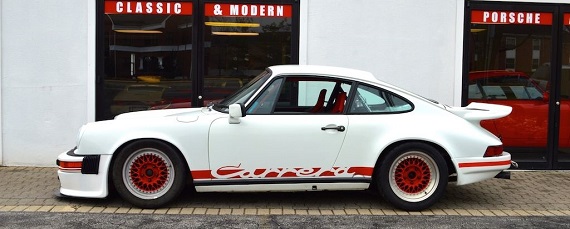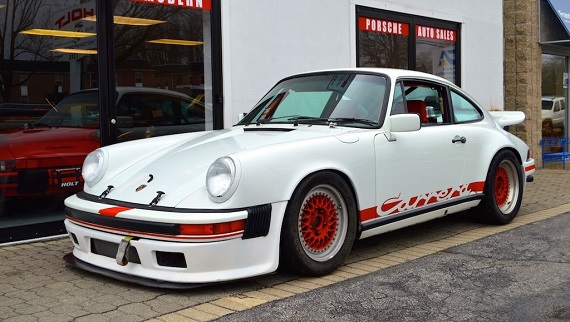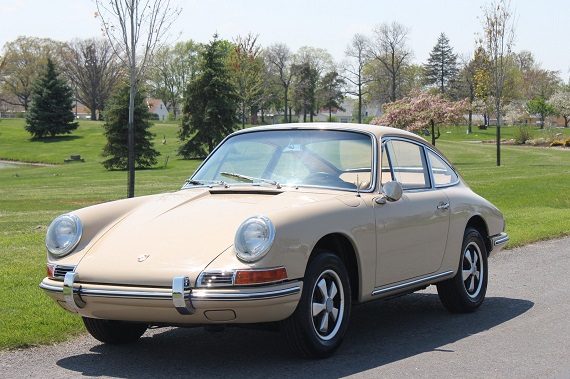Quick aside: earlier this year I spent some time out west doing some hiking and running. As an East-coaster my whole life, the desert environment is something that is entirely unfamiliar to me and there’s a captivating beauty to be found in those parched and sun-dried landscapes that is difficult to convey through anything other than being there. Of course, one of the starkest differences between that environment and the East coast is the natural color. There is less total variety, yet we still see an abundance of variety within a few basic shades. So what does this have to do with cars? Mainly, it’s that I have a greater appreciation for many of these natural shades, the earthier tones that we see far fewer of on modern cars but were quite popular in the late-’70s. I have always enjoyed particular shades of metallic brown even if I still might gravitate to many of the brighter colors of the spectrum, along with black, which possesses its own distinct appeal. But there is a way in which these natural colors conform with and reflect certain environments that itself brings along its own beauty and vitality. As with anything, not every color works well and some are clearly more interesting than others, but the color we see here is one of those that I think possesses a nice mix of beauty and simplicity. Here we have a Copper Brown Metallic 1979 Porsche 911SC, located in Arizona, with Cork leather interior and 88,588 miles on it.
Category: Porsche
The release of the 911 Turbo was a seminal moment for Porsche and for the 911 in general. The 911 had been a well-regarded performance car produced by a marque that had begun to establish a racing history that was closely tied to the cars it produced for consumers. The Turbo was to take each of those aspects of Porsche’s identity and crank it up a few notches. The original goal was to produce a turbocharged version of the 911 to meet homologation requirements. Presumably, the resulting car would be more akin to the modern-day GT: a stripped out and lightened rear-drive Turbo with a track-oriented focus. After rules changes rendered that homologation unnecessary Porsche’s intentions for the Turbo shifted. No longer would it be a track-focused car, but rather it would now serve to showcase the refinement and luxury that the marque was capable of packaging within its highest performance machine. Thus was born the 911 Turbo that has become so familiar to us to this day. For the initial production years the Turbo relied upon a turbocharged 3.0 liter flat-six and the car we see here comes from that early period: a Silver 1976 Porsche 911 Turbo Carrera, located in Texas, with Red leather interior and 68K miles on it.
CLICK FOR DETAILS: 1976 Porsche 911 Turbo Carrera on eBay
4 CommentsI am a beach person that comes from a beach family. We don’t live there but no year feels complete if I’ve been away from the water for too long. When growing up my favorite vacation each year was when we went to the beach and while as an adult I enjoy a little more variety it is still the yearly family beach trip that I look forward to the most. Thus, almost anything that delivers that sort of feeling, that sense of sunshine, sand, and ocean breezes, will grab and hold my attention. When that something is a car then each of these sensations is ratcheted up as I begin to think about those coastal drives. That is exactly the sort of sense I get from the car here. Some of that is due to the location in which it currently resides, but mostly it’s a combination of the color on a Cabriolet. It feels like the coast and a would surely make for a fantastic coast-road cruiser. Here we have a Lagoon Green Metallic 1987 Porsche 911 Carrera Cabriolet, located in California, with 46,998 miles on it.
CLICK FOR DETAILS: 1987 Porsche 911 Carrera Cabriolet on eBay
7 CommentsOver the past few decades, the classic car market has been so crazy in some cases that former race cars have been reverted expensively back to street models in order to capitalize on their greater value. Factory race cars obviously retain their appeal – sometimes even if they were never raced – yet cars that were converted by your average enthusiast retain the prospect of a return to their former street-worthy status. One of the most popular cars to convert to track use has traditionally been the Porsche 911, a car that since it’s inception was a gentleman racer in the making. But with values in a shocking climb, will we see these 911s leave their ancestral home at the track and head for climate-controlled garages with heavy specialty insurance premiums?
CLICK FOR DETAILS: 1987 Porsche 911 Carrera Coupe on eBay
1 CommentI am a big fan of variety and selection when it comes to car color. As such, I really enjoy coming across variants I haven’t seen before. While I have always been aware that Sand Beige existed and was available on older Porsches, I cannot recall actually coming across one. Now, I will say, Sand Beige isn’t an exciting color. This doesn’t make me take notice in the way a Blood Orange 911S or Riviera Blue GT2 does. It isn’t electric, but it is different and I still enjoy taking in any color simply so as to understand the nuances of the shade and the subtle distinctions that distinguish it from standard colors available at the time. Here we see it on an early short wheel-base 1966 Porsche 912, located in Ohio, with a nice Tan interior and 70,160 miles on it.









